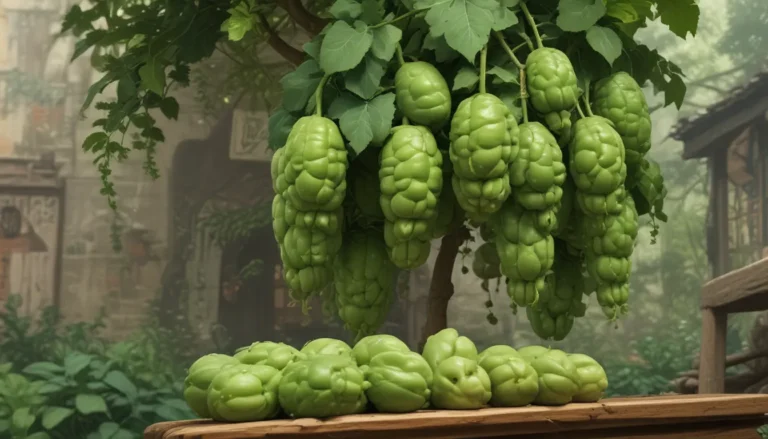Comprehensive Guide to Eradicating Turnip and Rutabaga Pests

If you are growing turnips or rutabagas, you may encounter a variety of pests that can wreak havoc on your crops. From aphids to root maggots, these pesky insects can cause extensive damage if left unchecked. In this article, we will explore the major insect pests that target turnips and rutabagas and discuss effective methods for controlling them.
Aphids: Identifying and Controlling
Aphids are a common pest that can plague turnip crops, with cabbage aphids being particularly fierce. These tiny insects can stunt plant growth and even cause plant death if populations become too large. Here are some tips for controlling aphids:
- Identify the different types of aphids that can affect turnips, including turnip aphids, black bean aphids, and green peach aphids.
- Check transplants for aphids before planting, and prune any infested plants.
- Use reflective mulch to deter pests from settling on your plants.
- Release beneficial insects such as soldier beetles, ladybug beetles, and hoverflies as a biological control method.
- Treat infested plants with neem oil or insecticidal soaps if populations get out of control.
Cabbage Flies and Root Maggots: Prevention and Management
Cabbage flies and root maggots, also known as Delia spp., can cause extensive root damage to rutabagas and turnips. These pests overwinter in the soil as pupae and can be challenging to control. Here are some strategies for dealing with cabbage flies and root maggots:
- Use floating row covers to prevent female flies from laying eggs, especially for spring crops.
- Remove and destroy severely damaged plants to prevent further infestation.
- Avoid using pesticides as no registered options are available for home gardeners.
Cabbage Whiteflies: Identification and Treatment
Cabbage whiteflies are another common pest that can infest turnips, causing damage to leaves and leading to the growth of sooty mold. These pests can be controlled using organic sprays, such as horticultural oils and insecticidal soaps. Avoid using pesticides that can harm natural predators of whiteflies and be mindful of application timing to protect your plants.
Flea Beetles: Preventing Damage
Flea beetles are tiny insects that can chew holes in turnip leaves, making them appear as if they have been shot with buckshot. Young plants are especially susceptible to flea beetle damage. Here are some methods for preventing flea beetle damage:
- Use floating row covers to protect young plants.
- Apply a thick layer of mulch to deter flea beetles.
- Consider insecticidal controls such as spinosad, carbaryl, permethrin, or befenthrin for infestations.
Slugs: Dealing with Slimy Pests
Slugs thrive in cool, humid conditions that turnips prefer and can quickly decimate crops if left unchecked. Control methods for slugs include beer traps, baits, and beneficial nematodes. Implement these strategies to protect your turnips from slug damage.
Turnip Sawfly: Identification and Control
The turnip sawfly is a serious pest that can cause significant damage to turnip crops. These pests lay eggs on turnip leaves, and their larvae feed on the underside of leaves, leaving behind skeletonized foliage. While Bt will not control turnip sawflies, using Spinosad can help manage infestations.
Wireworms: Prevention and Treatment
Wireworms are persistent pests that can infest the soil for up to five years, causing damage to seedlings and plant stems. To control wireworms, treat the soil with insecticide before planting or use seed treatments. Rotate crops to non-host plants and practice summer fallowing to reduce wireworm populations.
Conclusion: Protecting Your Turnip and Rutabaga Crops
In conclusion, turnips and rutabagas are susceptible to a variety of pests that can threaten your crops. By identifying these pests early and implementing effective control measures, you can protect your plants and ensure a healthy harvest. Whether you’re dealing with aphids, root maggots, whiteflies, flea beetles, slugs, sawflies, or wireworms, there are strategies available to help you combat these common pests.
Have you encountered any of these pests in your turnip or rutabaga crops? Share your experiences and tips in the comments below. Let’s work together to protect our crops and ensure a successful harvest!
For more information on turnips and rutabagas, including how to identify and treat diseases, grow rutabagas, plant and grow turnips, and grow tasty turnip greens at home, continue reading our informative articles.
Remember, with proper pest management strategies in place, you can protect your turnip and rutabaga crops from unwanted visitors and enjoy a bountiful harvest.
Image Source: Bonide





